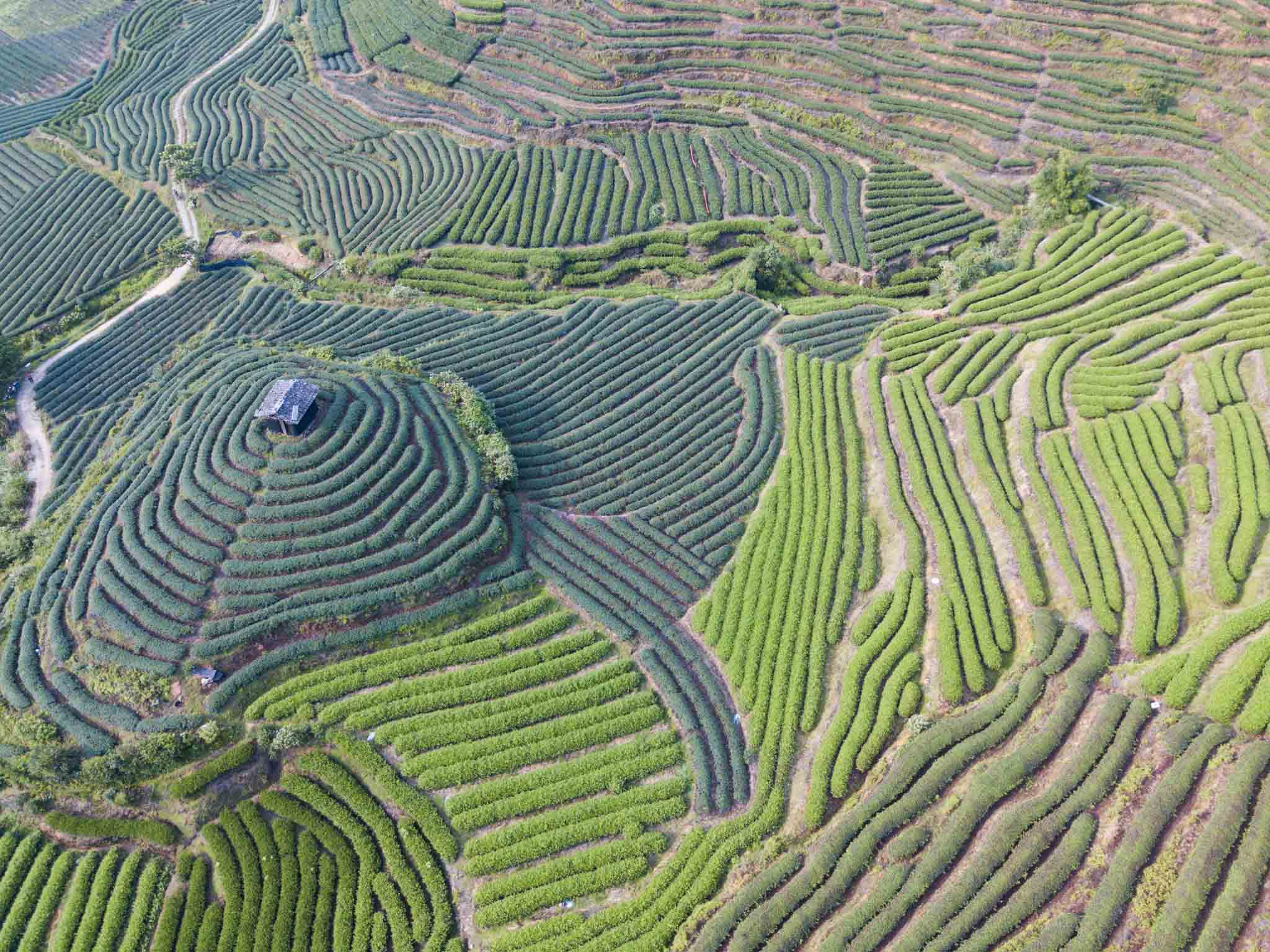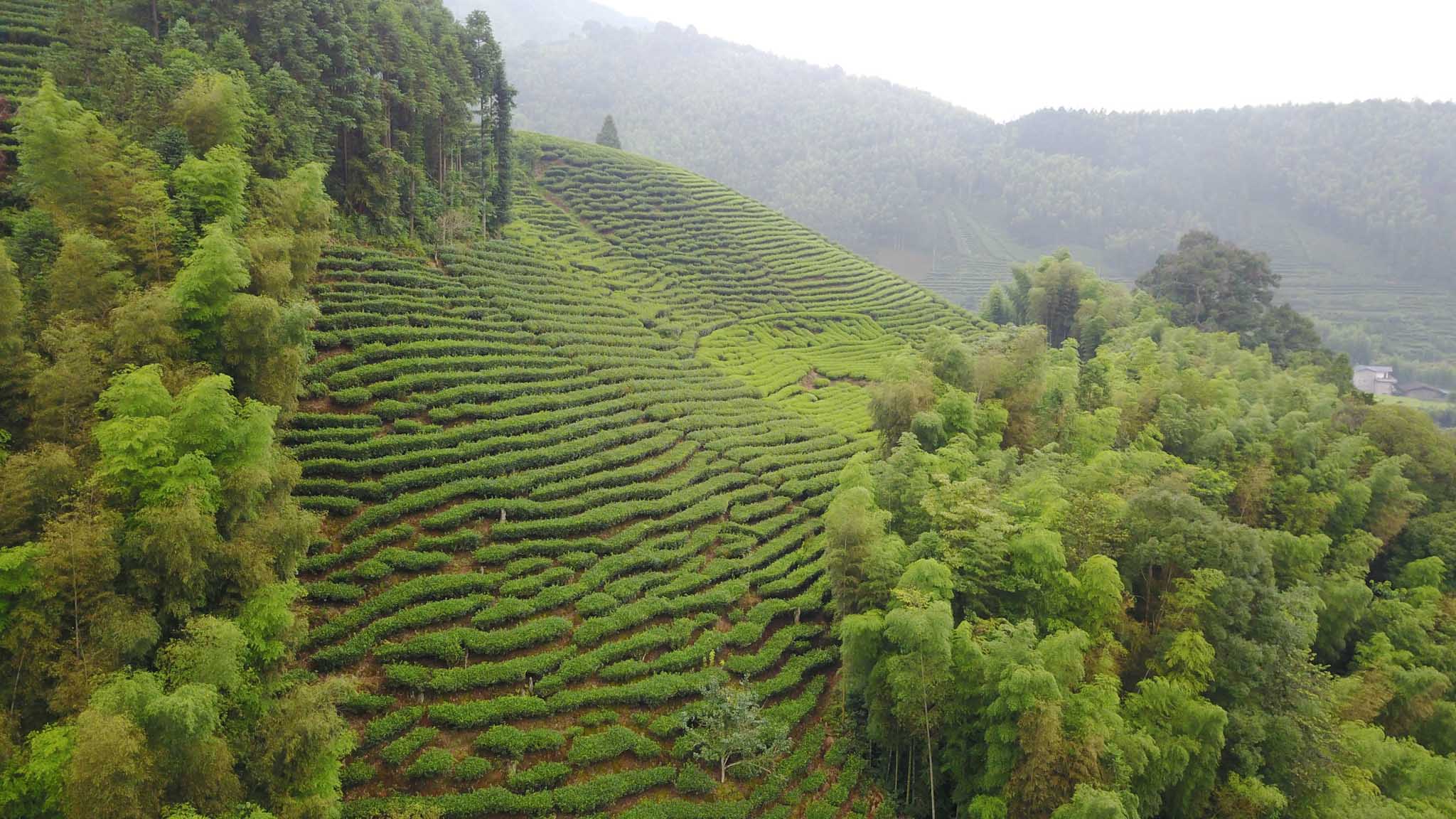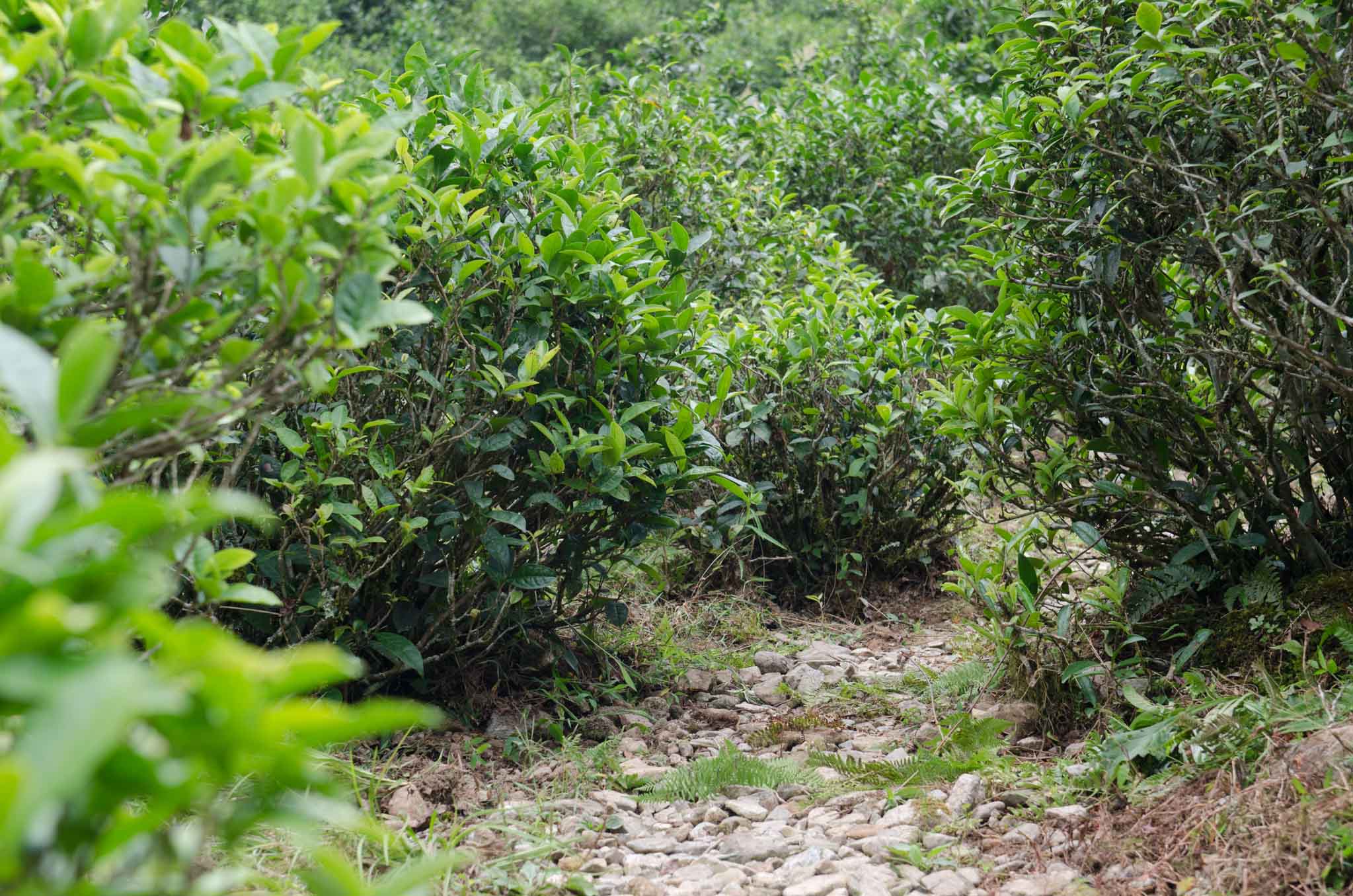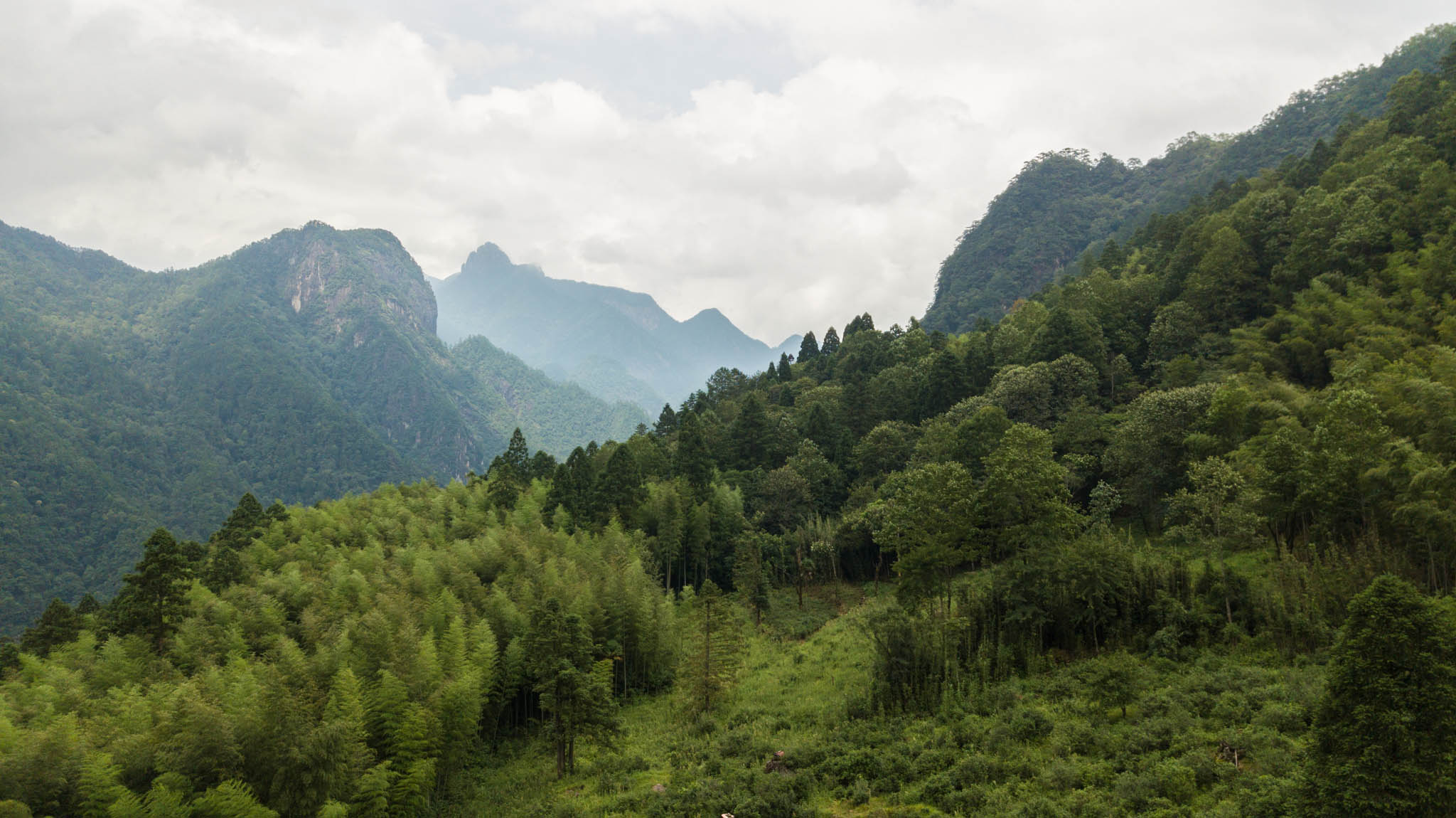Tea Farms
The following video will give you a chance to take a look at a few areas that our family grows tea in.
When I was growing up in Wuyishan, many people didn't farm any tea. Most of what is now called the banyan area was used to grow oranges and rice. If you look closely at the photo below you can see the history of the farm. Lower in the valley the rows of tea trees are on land that was leveled out for other crops in the past.

The farm has a small outcropping with a building on top. I can barely remember, but when I was small I lived in that small building for a couple weeks each year. My grandparents built it to guard the harvest.
There is a small creek fed by a spring near the top of the tea mountain. Some parts are too steep to grow tea. That is where my grandpa grows mushrooms. His shiitake mushrooms are delicious, with small stems and wide flat caps.

Wild Style Tea
In Wuyishan some teas are said to be wild. Honestly they are best referred to as wild style, since they are not truly wild. The leaves are not foraged in the jungle, but they are picked by hand from the irregular unkempt branches.

Above a wild style tea tree in Masu, a village high in the mountains above Tongmu. This farm is situated at about 1250 meters in elevation. The trees here grow in very rocky soil and are tended entirely by hand.
Below is a clearing where tea is grown on a bench high in the mountains. In the foreground is wild style tea trees and in the background the jungle; a mix of tall timber bamboo, Chinese redwood, and many other species.

